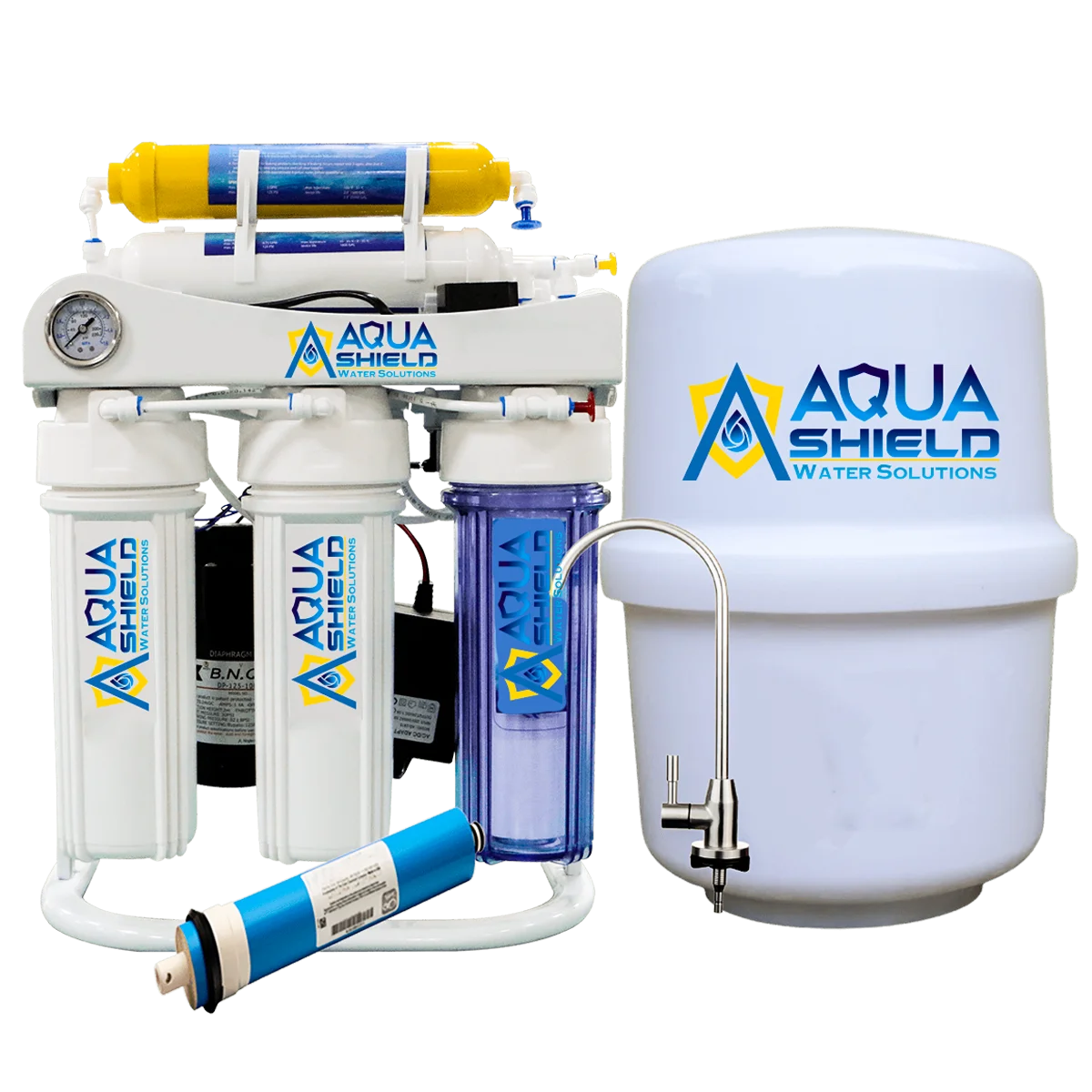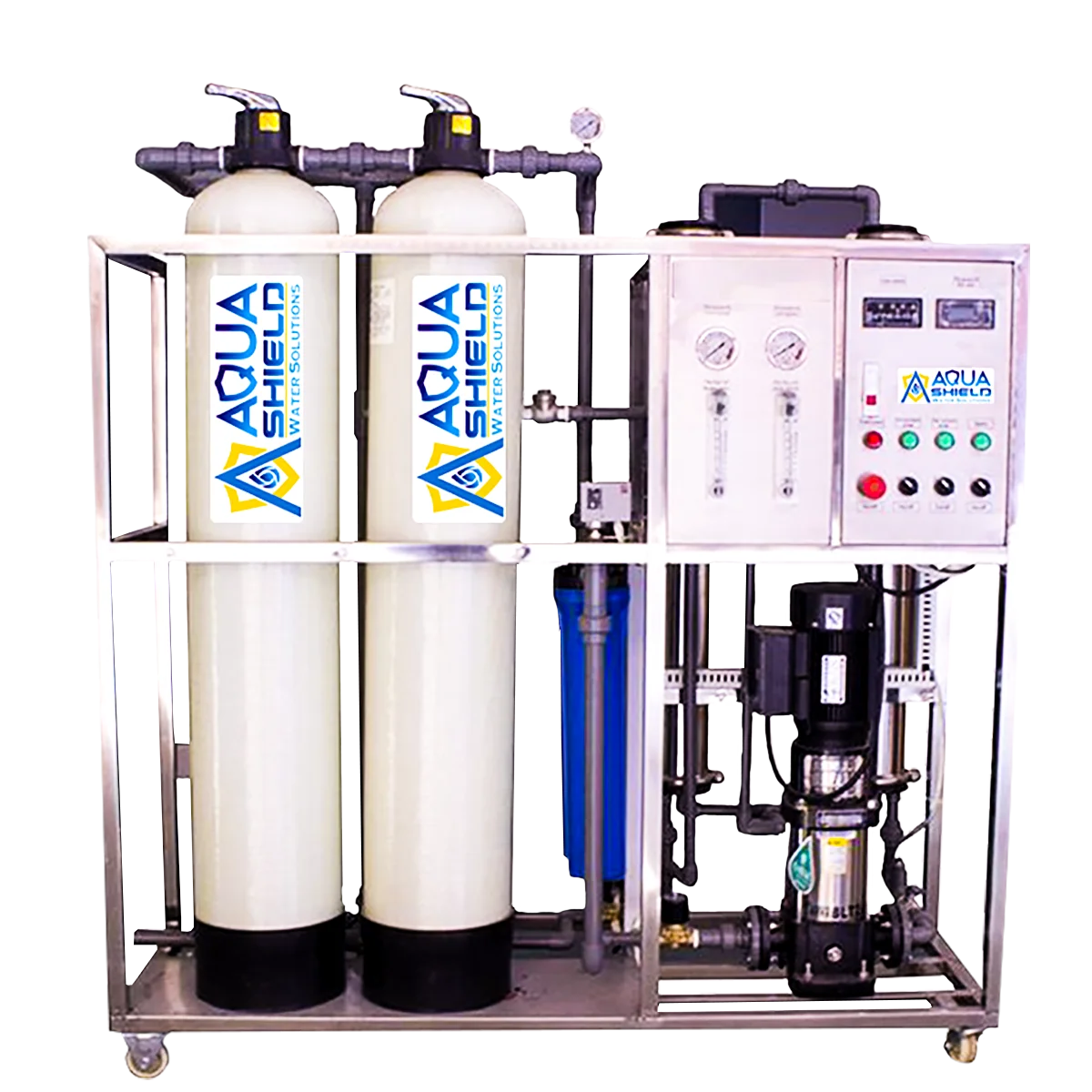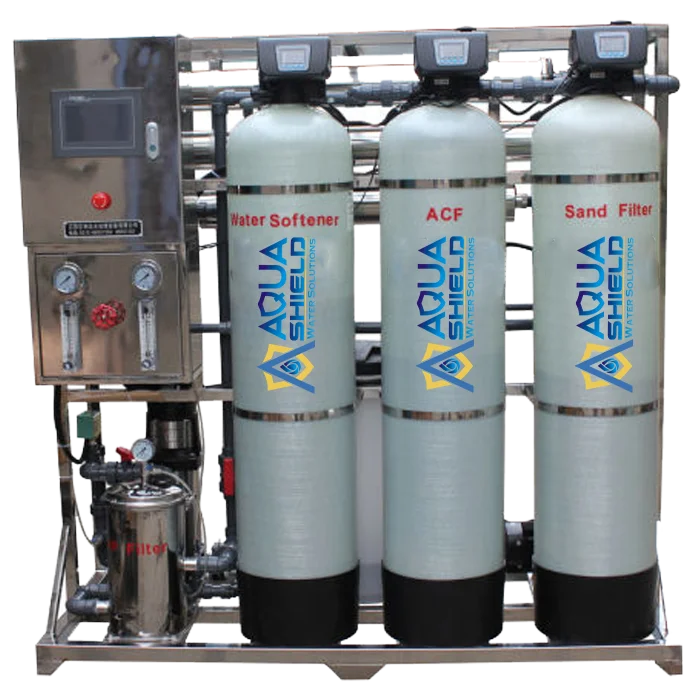The major impurities of waters can be classified in three main groups:
- Non-ionic & undissolved physical impurities. [Turbidity, Odour, Colour etc]
- Ionic and dissolved impurities [Ca, Mg, Na, So4, Cl, iron etc]
- Microbiological impurities [ Bacteria, Virus, Pathogens etc]
There are various processes employed to purify the water and various combinations of the processes are incorporated to ensure that final composition of the product confirms to the most stringent norms.
Typically a Mineral water Plant may consist of:
- Water Treatment Plant
- Packaging Plant
The Water Treatment Plant consists of One or All oft the below mentioned process:
Chlorine/Hypochlorite Dosing System
Chlorine/Hypo chlorite dosing system is done in the raw water for disinfection / oxidation of iron and manganese (if present) in the water before filtration. About 3-4 ppm of sodium hypo chlorite solution is dosed in raw water storage tank, which reacts with water to form hypo chlorite acids which acts as disinfecting agent. A LDPE chemical preparation tank with an electronic diaphragm type dosing pump is provided for this.
RAW WATER STORAGE TANK
Raw water, after chlorination is required to be stored to achieve a detention time as per process.
RAW WATER SUPPLY PUMP
A Horizontal Centrifugal type of pump in Stainless Steel construction has been provided for supplying Raw water to Pressure Sand Filter Unit. Necessary Suction / discharge pipe work in Upvc construction with isolation valves are also provided to Unit.
PRESSURE SAND FILTER
Raw Water is first filtered by filtration unit. Pressure Sand Filter Unit is provided for removal of suspended matters & turbidity from raw water. PSF Unit is a SS vertical Pressure Vessel. Internally, it is fitted with bottom collecting system. Uniform grades silica quartz sand is charged on the supporting media of pebbles and gravels. This unit is fitted with upvc frontal pipe work and Multiport Valve externally. During service cycle water is passed in down ward direction through sand bed, thus entrapping suspended matter & turbid particles. Over a period of time, sand bed gets chocked due to suspended matters resulting higher pressure drop and lesser floe. At this stage filter bed need to be backwashed.
Backwashing is continued for about 10- 15 minutes or till the effluent coming out is clear For Rinsing of Sand Bed: Service water is passed in down ward direction to settle down the sand bed. The effluent water is drained for about 5 minutes time to ensure all unclear water is drained down.
ACTIVATED CARBON FILTER
Activated Carbon can remove Chlorine, Odour, & Colour while passing the water through carbon bed along with Odour & Colour. This Carbon granules having larger surface area and specific property to absorb organics. ACF Unit is a FRP vertical pressure vessel. Internally it is fitted with strainer on bottom collecting system. The unit is fitted with upvc pipe work. During service cycle water is passed in down ward direction through Carbon Bed, which removes Chlorine & Odour from water.
The regeneration involves backwashing & rinsing of Carbon Bed. Over a period of time, life of carbon gets exhausted which can be checked during laboratory testing. Generally carbon is replaced once in a year.
MICRON CARTRIDGE FILTER
This kind of Micron Cartridge Filter having Series of filtration with the 20 Micron , 10 Micron , 5 Micron , 1 Micron & 0.2 Micron Nominal & Absolute Micron Cartridge. This is a Consumable Cartridge and should replace it after Days of operation. ANTISCALANT DOSING SYSTEM The hardness salts of calcium & magnesium are likely to be precipitated if concentration exceeds its solubility limit & it may scale the membranes resulting in poor treated water quality from RO System. To prevent this Antiscalant dosing (scale inhibitor) system is provided. The dosage rate is 4-5 ppm. A LDPE chemical preparation tank with an electronic diaphragm type dosing pump is provided for this.
REVERSE OSMOSIS SYSTEM
ULTRA VIOLET STERILIZER
The water to be disinfected, is passed through U.V. System, which consists of U.V. Tubes which radiates high intensity Ultra Violet Rays, which in turn kills the microorganisms. This system consists of a S.S finished surface housing with Ultraviolet Lamps fitted in it. The water to be treated is surroundings this tubes during treatment. An electrical system is provided for production of high voltage required for U.V. Rays generation.
OZONE GENERATOR
Though RO System rejects all the micro – organisms like bacteria & virus; it may redevelop in packed bottles over a period of time. Hence, it is necessary to disinfect RO Product water prior to bottling. In the Ozone Generator, Ozone is formed by energetic excitation of molecular oxygen, causing some of it to disassociate into oxygen atoms, which can recombine with oxygen. The most practical way to do this in an ozone generator is via a method called "silent-arc" or "corona" or "brush" discharge. The discharge occurs when charged electrons flow through a gas containing oxygen.
Ozone is used in water treatment for its oxidative qualities. Ozone oxidizes both organic and inorganic substances; removes unwanted taste, odor and color; and provide effective disinfection. Ozone is extremely efficient as a bactericide, fungicide and virucide, killing even chlorine-resistant Cryptosporidium. Another benefit is that ozone does not lead to the formation of trihalomethanes (THMs), which are formed when chlorine is added to raw water containing humic materials. Once a THM is formed, it is difficult to oxidize, even with ozone.
Ozone Contact/ Recirculating Tank
By industry standards, tall-tower diffusion is the most widely used contacting method. It introduces the ozone into the bottom of a column of water, or contact tank. The incoming (raw) water enters the top of the contact tank and leaves by the bottom.The gas is mixed in the incoming water by Venturi injection process, which uses an ejector where the Water is channeled through a short tube with a constriction in the middle which causes an increase in the velocity of the water flow and a corresponding decrease in the fluid pressure. The resulting suction draws ozone into the flow stream.
The Packaging unit consists of One or All of the below mentioned process:
BOTTLE MANUFACTURING BY PET BLOWING MACHINE: -
For manufacturing of PET Bottles for Different sizes and available in Semi-Automatic Operation up to 3600 Bottles per hour.RINSING -
FILLING – CAPPING – SEALING MACHINE:-
The bottles are fed into the machine which automatically rinses, fills and screws the cap on it. Caps are stamped with the date of manufacture and expiry before being put into the hopper for screwing on to the bottle.
LABELING:
In this section the labels and the neck sleeve are to be manually put on the bottles which will then pass through the shrink tunnels and onto packing conveyer.
FINAL PACKING:
This could be in cartons - done manually - and no machines have been provided for it.These Packing Machines come in both versions: Fully Automatic as well as Semi-Automatic.Semi-Automatic Machines are with Manual washing with Tables and rest activity of Filling and Capping are fully automatic operation. Both options have Shrink Tunnel for labeling application.








